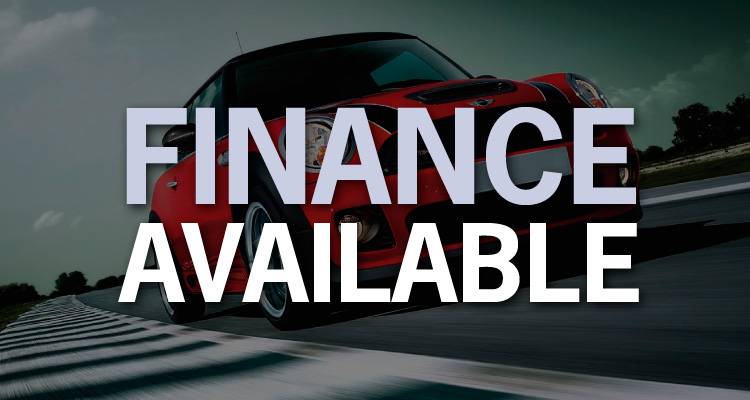However, because the market is so complex, it can be difficult to know exactly what the right finance package is for you and which one is going to cost you the least amount of money over the term of the loan or credit.
Last year, more than three-quarters of all of the cars that were registered in Britain were bought on credit. That means that there is a multitude of options when it comes to choosing the right car for you and marrying it with the right car finance for your circumstances. It doesn’t matter what your history of financial management is – you may have made some mistakes in the past, have slipped up on repaying a loan at some point or have a spotless record.
It is almost certain that someone will be able to offer you the right package to suit your budget and your credit history. However, each package has both upsides and downsides, and in this article, we’re looking at the three main car finance options and how to choose the best one for you.
If you do have a poor credit record, it is no longer the case that your options are limited to a few finance companies charging extortionate interest rates. Competition in the market means that even the more established finance houses are willing to consider financing a car to people with impaired records and these deals can be surprisingly affordable. But, take the time to consider each type of car finance before signing up for a deal which might not suit your present circumstances and plans:
Personal Contract Purchase (PCP)
Almost unheard of 15 years ago, personal contract purchase is similar to historic
hire purchase (HP) schemes. With HP, somebody looking for a new car is asked to put a down payment on a new vehicle and then enters into a monthly payment plan that lasts for a set time – two, three or four years are the most common. PCP works in the same way and when the last payment is due: the motorist can choose to make a final payment covering the value of the car and take ownership of it or give the keys back to the finance company and use any value in the car which is above the estimated value determined at the beginning of the deal as a deposit on another PCP package.
PCP deals are flexible, which makes them popular among buyers who want to be able to negotiate a package that will suit them over the term of the finance. For instance, one buyer may wish to put down a larger deposit and so benefit from lower monthly repayments over the term of the finance. Another buyer may not have much money to put down and so will choose to make higher monthly payments.
The downside with PCP deals is that you never actually own the vehicle until you have made that final payment so if you slip up on your monthly payments, the finance company will be within its rights to take possession of your car.
Also bear in mind that you will have to sign up to an agreed annual mileage limit at the beginning of the finance – the default is usually 10,000 miles a year – and, if you exceed this, you will be charged a certain amount for every mile that you go over the limit which can be expensive if you don’t estimate correctly before you start the contract.
Personal Contract Hire (PCH)
When you hire a car, you usually do so for a few days or weeks. But with personal contract hire you’re hiring a car to use over the long term. You have your vehicle for however long the car finance is for, but you never actually own it. PCH does not come with the option to make that final payment covering the car’s value at the end of the package. When you’ve made the final payment on a PCH plan, the finance company continues to own the vehicle, and you are left with nothing.
However, there are significant benefits from PCH finance, most notably that the monthly payments are relatively low because you are not trying to make that eventual purchase on the vehicle. That means that you could use PCH to drive a better or more upmarket car than you would be able to with other forms of finance.
There are other conditions with PCH plans and usually these will include a stipulation that the car must be maintained – often by a particular chain of garages – according to its service schedule. But many PCH plans come with servicing, tyres, road tax and, sometimes, insurance included.
Loans
Loans are separate from the purchase of the vehicle itself, meaning that you can shop around for the best interest rates and terms before going to a garage to start haggling over the price of a car. When you take out a loan with a bank or other financial organization, it has no hold over the car itself, meaning that you always own it, no matter what happens. It also means that you will hold the upper hand with car dealers who are often more interested in selling somebody a finance package than the car itself!
Two main types of personal loans can be used for car finance
Unsecured loans – These often come with relatively high interest rates and higher monthly repayments than either PCP or PCH deals. But you don’t have to worry about how many miles you’re going to be doing each year, where you get the car serviced or what happens at the end of the deal because you always own the car outright.
Secured loans – These usually come with lower interest rates than unsecured loans because the lender has the security of your property when offering you finance. The downside is that if you fail to keep up with the repayments, you may face having your home repossessed by the lender.
Article provided by Mike James, an independent content writer working together with Solution Loans, a technology-led finance broker with many years’ experience of advising clients of their most suitable type of credit.
Emma Ward
Latest posts by Emma Ward (see all)
- A Guide to Alternative Car Fuels - May 3, 2016
- The 3 Main Car Finance Options and How to Choose the Best One for You - April 5, 2016
- Behind the Wheel – How to Dress for an Easy Drive - March 3, 2016






